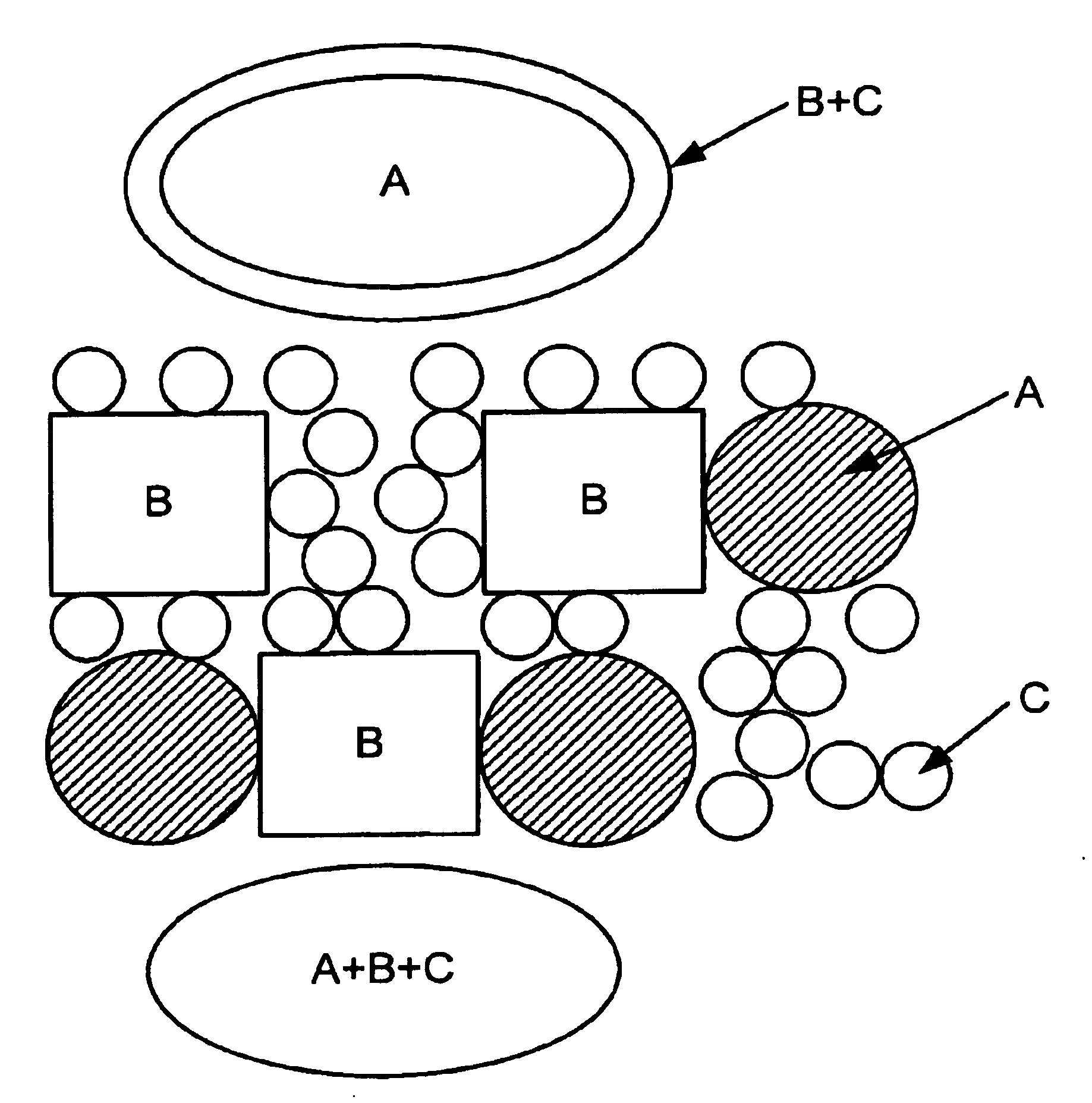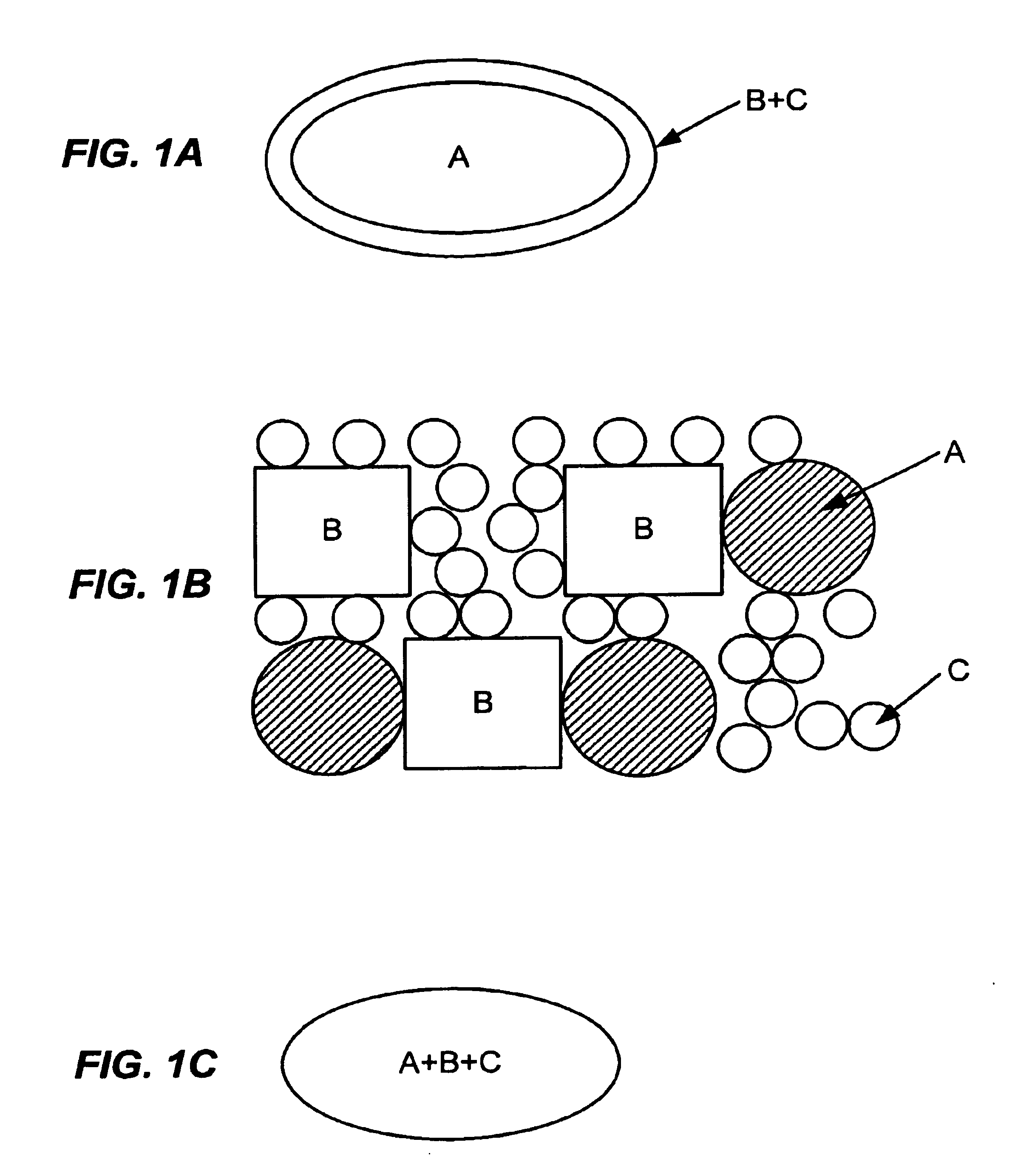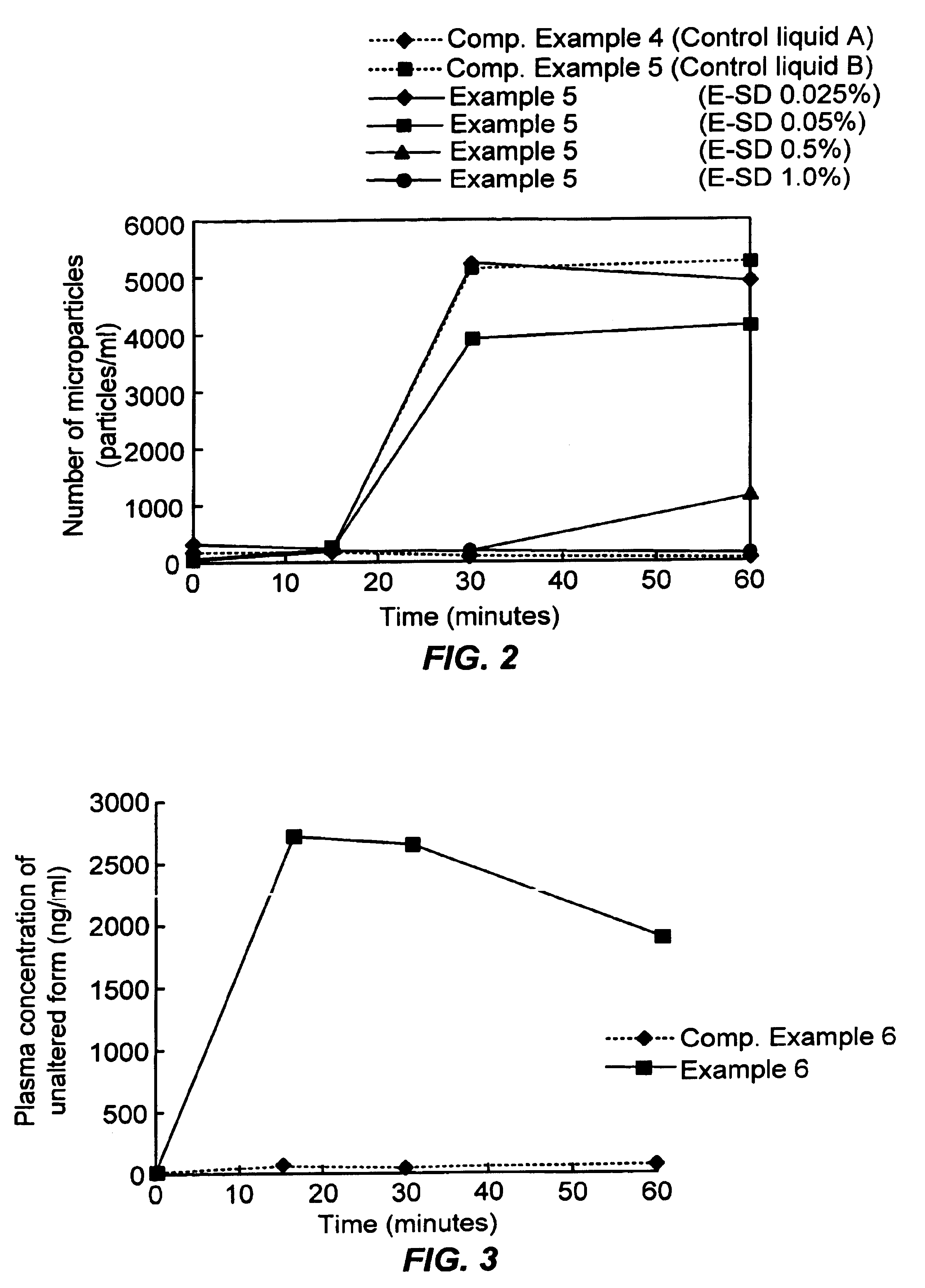Pharmaceutical composition for oral use with improved absorption
a technology of oral absorption and pharmaceutical compositions, applied in the field of oral agents, can solve the problems of compounding becoming difficult to absorb through the digestive tract, and achieve the effects of permeability of the mucous layer, difficult to absorb, and difficult to metaboliz
- Summary
- Abstract
- Description
- Claims
- Application Information
AI Technical Summary
Benefits of technology
Problems solved by technology
Method used
Image
Examples
example 1
[0120]1,650 g Eudragit™ E100 (Röhm GmRH) and Tween 80 at a ratio of 10:1 were dissolved in 12,000 g 1 mol / l aqueous hydrochloric acid ethanol mixture (5:12) to obtain the spraying liquid. The spraying liquid was spray dried at a spraying speed of 30 g / minute, intake temperature of 85° C., and exhaust temperature of 62-66° C. using the model L-8 Spray Dryer (Ohkawara Seisakujo). After drying for 24 hours at 40° C., a white powder was obtained (E-SD hereafter; used in the following Examples, Experiments, Comparative Examples, etc., unless otherwise specified). An experiment was performed and a was calculated by the same method as in Experiment 1 using artificial mucous obtained by dissolving 0.5 mg / ml TC solution in the D phase of the equilibrium dialysis cell and 3% E-SD in the R phase.
[0121][Control 1]
[0122]An experiment was performed and a was calculated by the same method as in Experiment 1 using 0.5 mg / ml TC solution in the D phase of the equilibrium dialysis cell and PBS buffer ...
example 2
[0130]Six grams E-SD were weighed out and dissolved in 100 ml PBS buffer solution to obtain an aqueous 60 mg / ml solution (solution B hereafter). Ten milliliters solution A and 10 ml solution B were mixed with a vortex mixer. The solution was administered through the rat intestinal loop and the plasma concentration of unaltered form was determined by the same method as in Experiment 2. The Cmax and AUC were calculated from the changes in the plasma concentration that were obtained.
example 3
[0131]Eudragit™ EPO (Röhm GmRH) was dissolved in aqueous hydrochloric acid and lyophilized (the lyophilized product is E-FD hereafter). Six g E-FD were weighed out and dissolved in 100 ml PBS buffer solution to obtain an aqueous 60 mg / ml solution (solution C hereafter). Ten milliliters solution A and 10 ml solution C were mixed with a vortex mixer. The solution was administered through the rat intestinal loop and the plasma concentration of unaltered form was determined by the same method as in Experiment 2. The Cmax and AUC were calculated from the changes in the plasma concentration that were obtained.
PUM
| Property | Measurement | Unit |
|---|---|---|
| pH | aaaaa | aaaaa |
| pH | aaaaa | aaaaa |
| viscosity | aaaaa | aaaaa |
Abstract
Description
Claims
Application Information
 Login to View More
Login to View More - R&D
- Intellectual Property
- Life Sciences
- Materials
- Tech Scout
- Unparalleled Data Quality
- Higher Quality Content
- 60% Fewer Hallucinations
Browse by: Latest US Patents, China's latest patents, Technical Efficacy Thesaurus, Application Domain, Technology Topic, Popular Technical Reports.
© 2025 PatSnap. All rights reserved.Legal|Privacy policy|Modern Slavery Act Transparency Statement|Sitemap|About US| Contact US: help@patsnap.com



